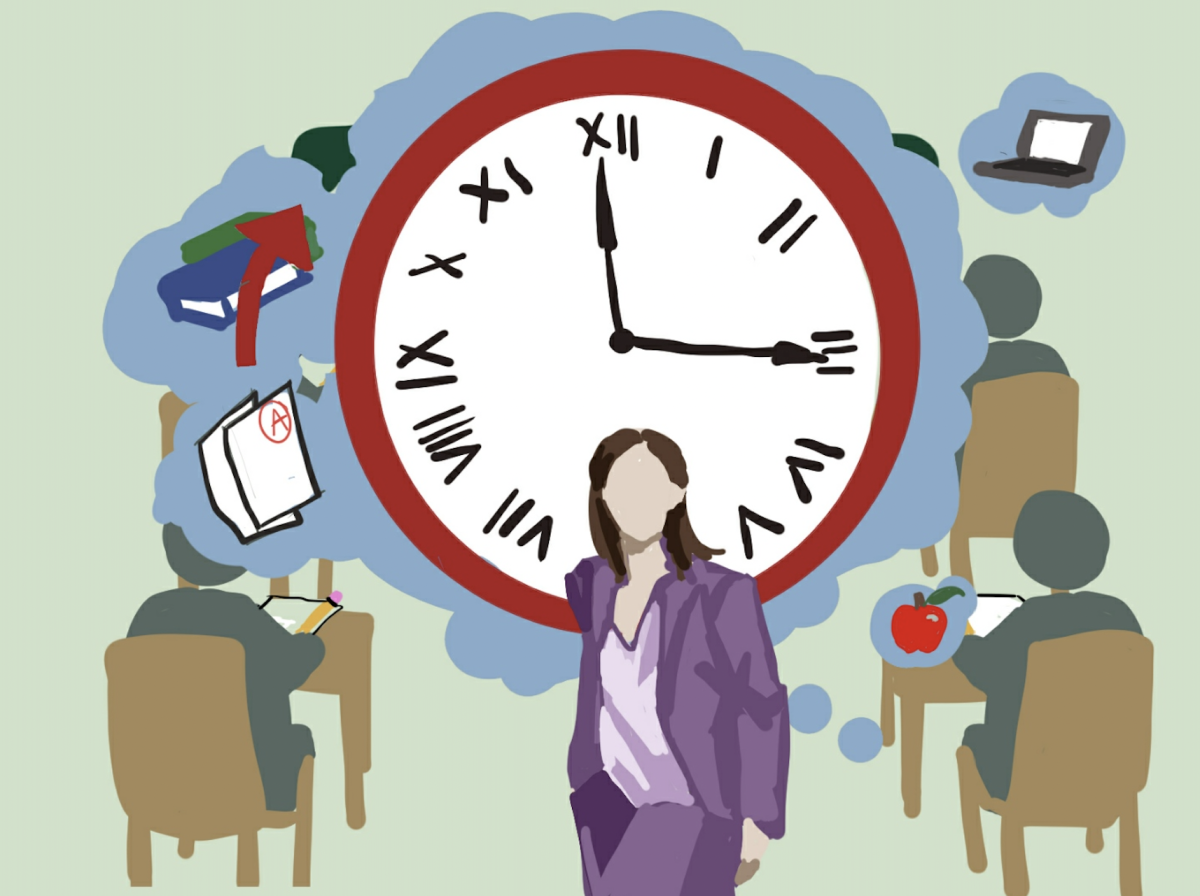Before the semester officially ends in January, the weeks leading up to finals are packed: students urgently prepare for their cumulative or unit exams and grade-based anxiety is nearly tangible in the atmosphere.
With post-secondary schools prioritizing the Grade Point Average (GPA), a measure that provides college admission offices a picture of general class performance, finals are even more fraught for students. However, teachers also face immense stress during this time of the year, and students should be aware of the amount of time and preparation poured into finals, both before and during the week of testing. To express their understanding, they should refrain from sending an excessive number of emails to prevent further stress.
Full-time teaching is a stressful occupation: almost 75% of teachers often face such pressure, according to EdWeek. Even though teachers’ stress levels may have improved relative to COVID-19 distance learning, which had brought challenges along with the shift to virtual classrooms, persistent work demand for teachers is still high.
Moreover, the number of students each teacher must educate, account for and care for during school is large. Currently, IUSD has a 1:30 to 1:32 teacher-to-student ratio. This ratio further highlights the obstacles teachers may face on a day-to-day basis as finals week looms overhead, adding on to the pressure of providing each student individualized feedback under a time crunch.
To prepare for finals week, teachers consider the testing environments in order to ensure optimal assessment atmospheres for students, according to English teacher Christina Han, who was also a student teacher at Portola High last year.
“It’s a stressful situation for both [students and teachers],” Han said. “Teachers who have the control of finals try to make sure everything’s shipshape from the test material to the seating arrangements to make sure that everything flows.”
Especially as winter break approaches, grading is another stress factor. Maintaining a balance between quality feedback and time management in order to pass back formatives can be especially stressful for educators, according to Han.
The stress as a teacher during finals week is not limited to quick turn-arounds for grades — in fact, it also comes down to the pressure that students feel themselves, according to World History and AP Human Geography teacher Shameemah Motala. As the semester comes to a close, students with borderline grades feel heightened anxiety that is then “transferred” to teachers, according to Motala.
By abstaining from sending too many emails and instead relaying messages to the teacher in-person, students will be able to respect and be considerate of the educators’ well-being. In fact, students should especially refrain from sending emails after school hours — research has found that sleep quality and anxiety levels can fluctuate through emails sent outside of one’s work period.
Especially as discussing grades and missing assignments can become frequent during finals week, teachers can prefer this in-person alternative compared to a digitized mailbox.
“There’s less room for miscommunication because grades and missing assignments can sometimes be more touchy subjects for the student,” Han said.
Critics may claim that the lack of student awareness about teachers’ stress is warranted given the high-stakes nature of finals week, which can have an emotional, psychological, and physical toll on them. However, students can prioritize well-being through, for example, healthy meal plans, and the stress they feel does not justify exacerbating educators’ stress levels during finals.
Although the onslaught of exams, projects and assignments builds pressure, students can feel less stressed as they remind themselves of the well-thought-out process of each task given at school. Through this awareness, students can take action by abstaining from sending too many emails to their teachers, instead meeting them in-person for increased efficiency.





